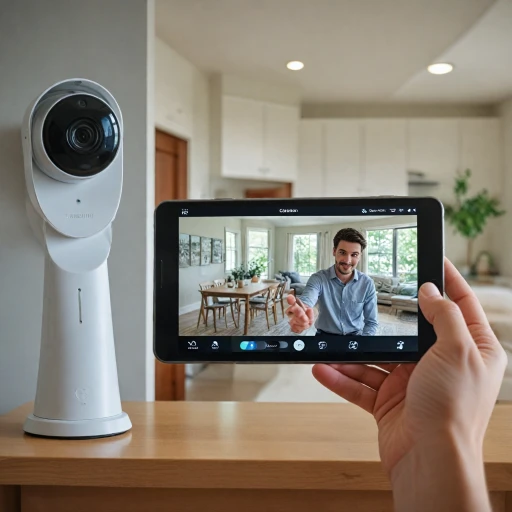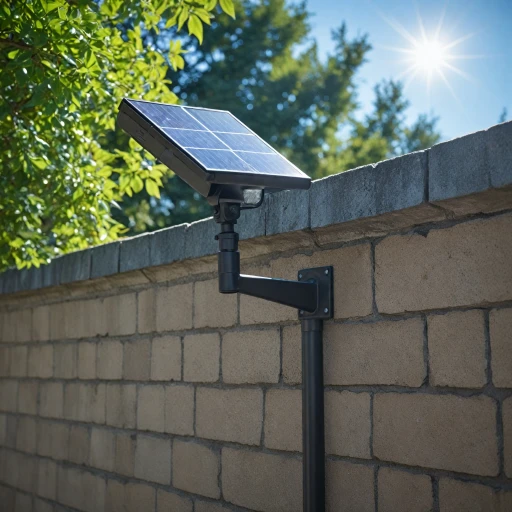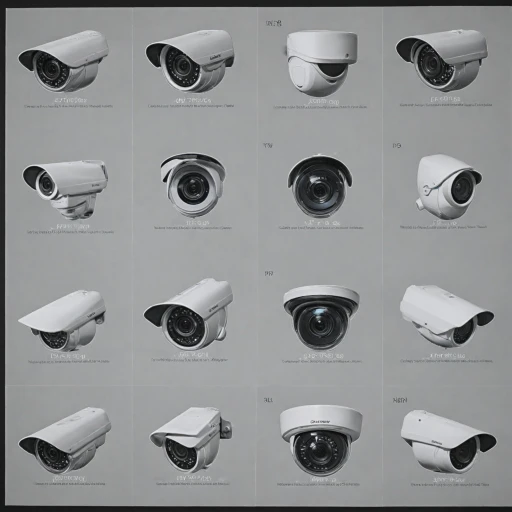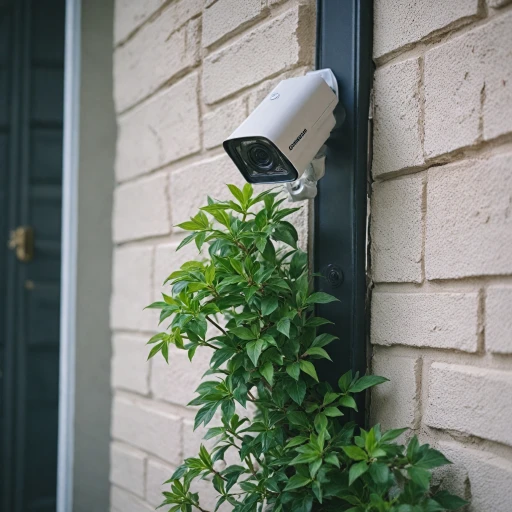
Understanding the Role of Micro SD Cards in Security Cameras
The Importance of Memory Cards in Your Surveillance System
When it comes to security cameras, the role of microSD cards cannot be overstated. These small yet powerful memory cards are integral to the functionality of security systems, acting as the storage backbone for your recorded footage. Without adequate storage, your security camera can't store video efficiently, which is pivotal for reviewing incidents after they occur. Security cameras utilize these cards to continuously record and save surveillance footage. Depending on your camera's specifications and settings, the microSD card will capture video in high definition, which can result in large file sizes. Therefore, the type of storage card you choose directly impacts the quality and reliability of your camera's recording capabilities. Beyond simply storing footage, microSD cards also play a crucial role in maintainining security. These cards ensure that your footage is immediately available to you without relying on internet connectivity, providing peace of mind, particularly in areas with unreliable internet service. Moreover, because local storage doesn't require transferring data to the cloud, it offers enhanced data privacy. Many security camera models, including smart cameras with features like pan and tilt, require a specific type of microSD card to deliver optimal performance. These cameras often demand cards with high write speed, excellent endurance, and ample capacity given their rich feature set. For instance, a high endurance microSD card, such as Samsung Pro Endurance, is designed to withstand the continuous writing of data in demanding environments, a necessity when storing surveillance footage. Feel free to explore more about how these storage solutions can be augmented with tools like an SD card viewer to better manage and review images and videos captured by your home security camera system. In the following sections, we delve into the features that make some microSD cards better suited for security use compared to others, and we'll provide some pointers on installation and troubleshooting to ensure smooth, uninterrupted security camera operation.Key Features to Look for in a Micro SD Card
Features That Matter When Selecting a Micro SD Card
Choosing the right microSD card is crucial for the smooth operation of your security cameras. As you navigate through various options, consider these essential features:- Capacity and File Sizes: Your security camera’s video resolution largely dictates the necessary capacity microsd card. Cameras recording in high-definition or those set up for pan and tilt actions generate larger file sizes, increasing storage demands. Make sure your choice supports this need.
- Endurance Rating: A critical factor, especially for cameras like smart cameras with high uptime. High endurance cards, such as the Samsung Pro Endurance, are tailored for continuous video recording. They withstand constant read and write activities, offering reliability for months or even years.
- Speed Class and Write Speed: The card's speed class is essential to prevent lag in video uploads. Class UHS speed class ratings ensure high-speed data transfer, vital for maintaining seamless footage updates. Write speed must be sufficient to handle real-time video without delay.
- Storage Security and Performance: Cards equipped with advanced security features ensure that your data is protected from corruption and loss. Check for cards with built-in privacy policy adherence and anti-theft features.
Comparing Different Brands and Models
Brand Comparisons for Optimal Performance
When it comes to choosing a microSD card for your security camera, comparing different brands and models can seem like a daunting task. However, ensuring your camera's optimal performance relies heavily on the features each card offers, such as the endurance rating and write speed.
Leading manufacturers like Samsung, known for their Samsung Pro and Pro Endurance lines, provide cards that are not only known for their high endurance but are also designed specifically for continuous video surveillance. These models offer a range of speed class ratings, such as Class UHS, ensuring that your security cameras record videos smoothly without interruption.
Capacity and File Sizes: Security cameras may produce large video files, especially in smart cameras with high-resolution capabilities. Therefore, selecting a card with ample memory capacity is vital to avoid frequent replacements and ensure seamless video recording. While some cards boast high-speed and large storage capabilities, not all are optimized for long-term, continuous usage.
Another critical factor to consider is the cost versus performance. While less expensive cards may be tempting, investing in reliable cards means peace of mind knowing that your security footage is reliably captured and stored. For example, investing in a high endurance card can save on premature wear and tear.
If you are looking for a comprehensive solution to enhance your security mechanism, consider pairing your card choice with innovations like Arlo's solar panel solution. It can further optimize energy efficiency, allowing your security system to operate independently and securely.
Installation and Maintenance Tips
Setting Up and Caring for Your Micro SD Card
When it comes to installing your micro SD card in security cameras, making sure it's done right can extend the lifespan of your card and improve the quality of your video storage. To begin, ensure your camera is powered off before inserting or removing a microSD card. This simple step prevents any damage to the card or data corruption. Locate the card slot on your smart camera, which is typically found behind a closed flap or within the battery compartment for added security. After inserting the card, power on your device and check the camera's settings menu. This will allow you to format the card, if necessary, ensuring it's prepared for recording. This option further ensures compatibility and optimizes write speed and speed class. Regular maintenance is also crucial. Periodically check the camera's storage settings to free up space on your card by deleting older files or transferring them to another storage device. Many high endurance cards, like the Samsung Pro Endurance, are built to withstand multiple write cycles, but consistent monitoring can help maintain performance and endurance. When troubleshooting common issues like error messages or failure to read the card, first check compatibility. Security cameras may require a card of a certain speed class or capacity microsd, so double-check this against your camera’s specifications if problems arise. Additionally, consider updating your camera’s firmware or formatting the card to see if these solutions resolve the issue. Be aware that the weather or external environmental factors could affect video quality and the performance of the microsd card. It's imperative to ensure cameras in outdoor settings are well-protected. For more insights into the key features that affect the endurance and performance of your card, you might find this resource on choosing the right SD card for your surveillance camera helpful. Proper installation and care are fundamental to ensure that your micro SD card operates at its best, enhancing the security and reliability of your camera system.Troubleshooting Common Issues
Addressing Potential Challenges with MicroSD Cards
Security camera systems relying on microSD cards for video storage powerfully combine convenience and efficiency, but may occasionally encounter issues. Learning how to troubleshoot these common concerns will ensure seamless operation of your home security cameras.
- Compatibility Problems: Ensure your memory card is compatible with your security camera. Not all smart cameras support every type or capacity microSD card, so checking the camera's manual or manufacturer's website is wise for a precise fit.
- Corrupted Cards: A corrupted card might prevent the storage of valuable video footage. To fix this, you can format the card using the camera itself or a computer. Remember that formatting will erase all stored data, so back up any critical files before proceeding.
- Write Speed Issues: If your camera records high-quality, large file sizes, ensure your microSD card has the appropriate class and adequate write speed. Class UHS cards and advanced models like the Samsung Pro Endurance are recommended for consistently smooth video capture and storage.
- Reduced Card Lifespan: Heavy usage and exposure to various environmental conditions can affect a card's endurance. High endurance memory cards are designed for extended use; reviewing customer ratings and product features can guide you to the right choice for your specific needs.
- File System Errors: Inconsistent power supply or improperly ejecting a card from the camera can cause file system errors. To reduce the risk, eject cards while the camera is powered off, and opt for power sources with a steady supply.
For smooth functioning, proper installation and regular maintenance of microSD cards in your security systems is a must. Ensure your cards are operating at their best by periodically checking for firmware updates specific to your camera, and feel free to explore any privacy policy associated with your chosen card brand for added security transparency.
Future Trends in Security Camera Storage
Emerging Trends in Security Camera Storage Solutions
As technology continues to evolve, the landscape of security camera storage is also undergoing significant changes. Here are some of the future trends that are shaping the way we think about storing video footage from security cameras:
- Increased Capacity and Speed: With the demand for higher resolution video, the need for larger capacity microSD cards is growing. Manufacturers are pushing the limits of memory card storage, offering options with greater capacity microsd and faster write speed. This trend is crucial for ensuring that security cameras can store high-quality video without interruption.
- High Endurance Cards: As discussed in earlier sections, high endurance microsd cards are becoming more popular due to their ability to withstand continuous writing and rewriting. These cards, like the Samsung Pro Endurance, are designed to last longer, making them ideal for security applications where reliability is paramount.
- Integration with Smart Technology: The rise of smart cameras is leading to more integrated storage solutions. These cameras often feature built-in memory cards or cloud storage options, allowing for seamless video management. The integration of smart technology also enhances the security and privacy policy of stored data.
- Advanced Security Features: As privacy concerns grow, manufacturers are incorporating advanced security features into their storage solutions. This includes encryption and secure access protocols to protect video footage from unauthorized access.
- Cloud Storage and Hybrid Solutions: While microSD cards remain popular, there is a shift towards hybrid storage solutions that combine local and cloud storage. This approach offers the benefits of immediate access to video footage with the added security of offsite storage. For more insights on cloud storage, feel free to explore the benefits of cloud storage.
These trends highlight the dynamic nature of security camera storage solutions. As technology advances, staying informed about these developments will help you make the best choices for your security needs.













